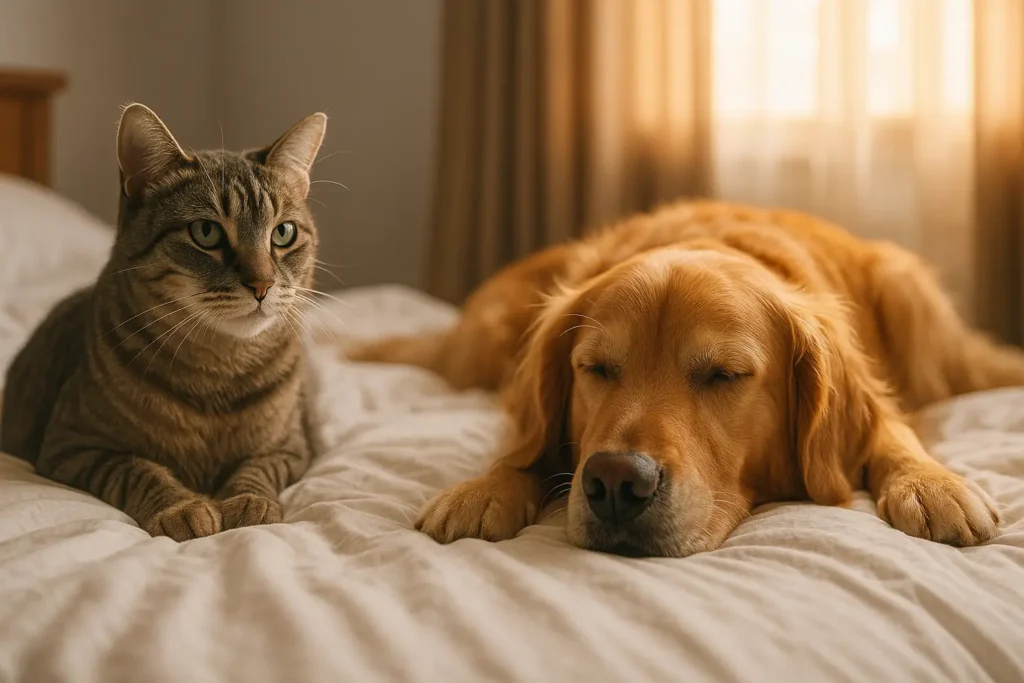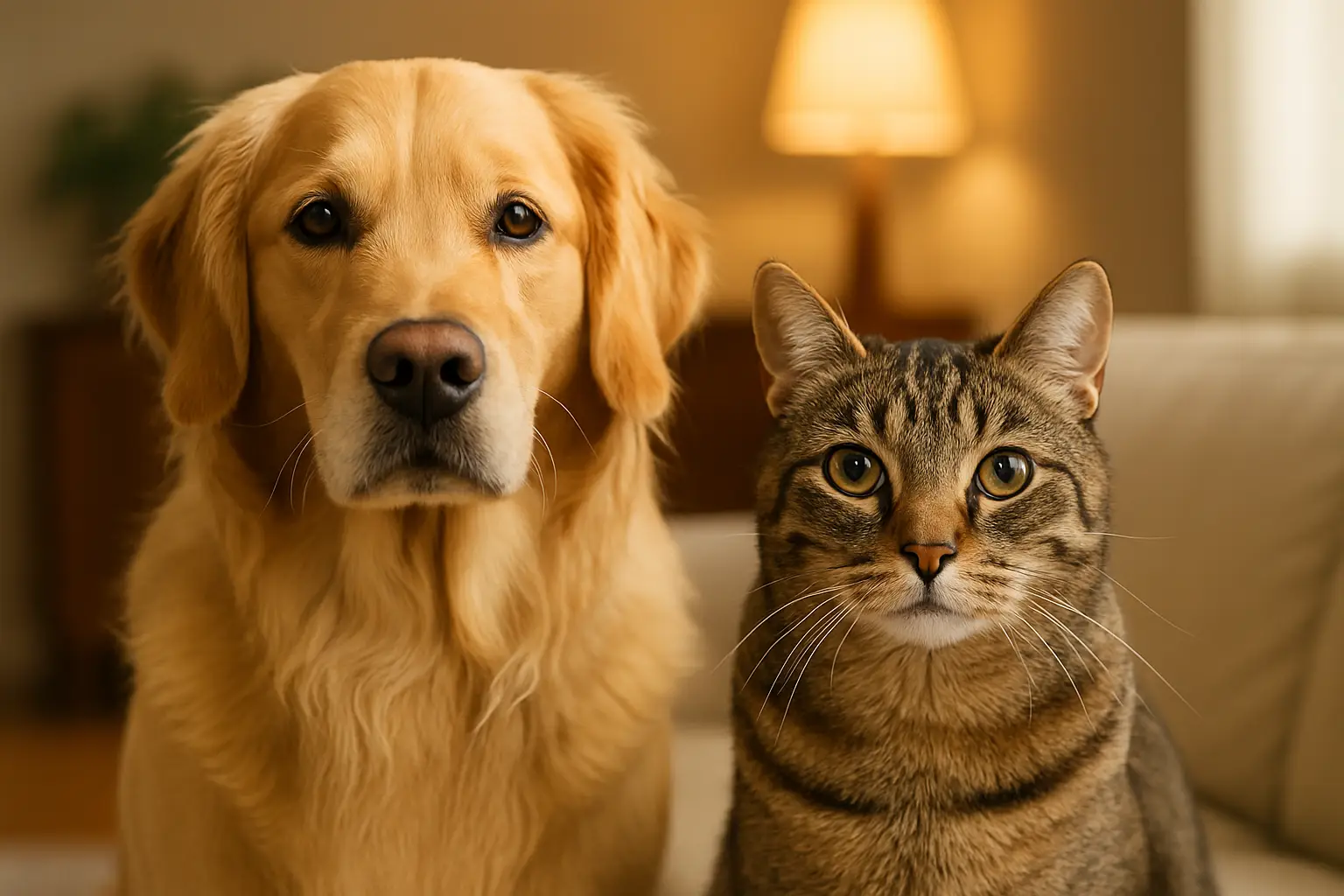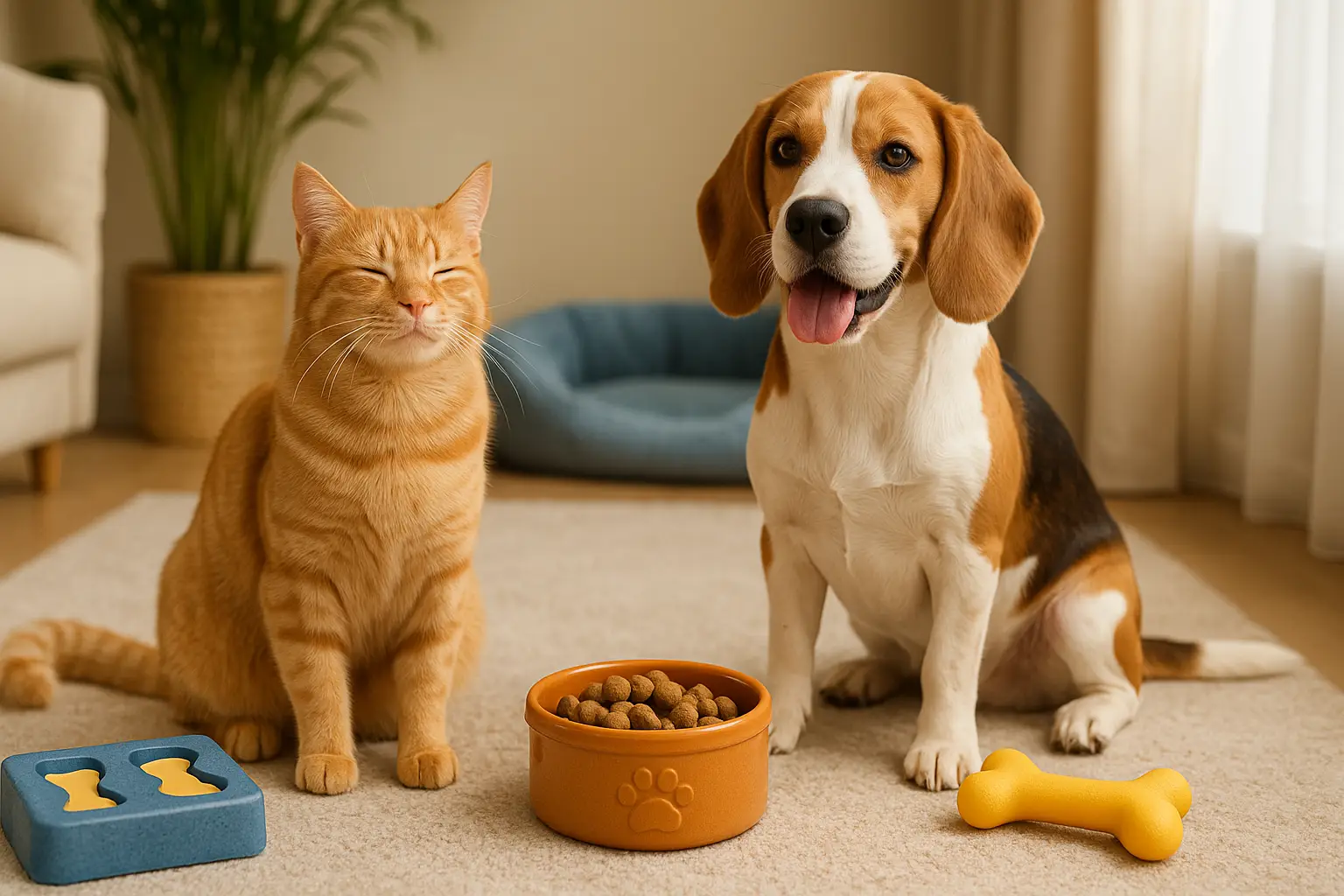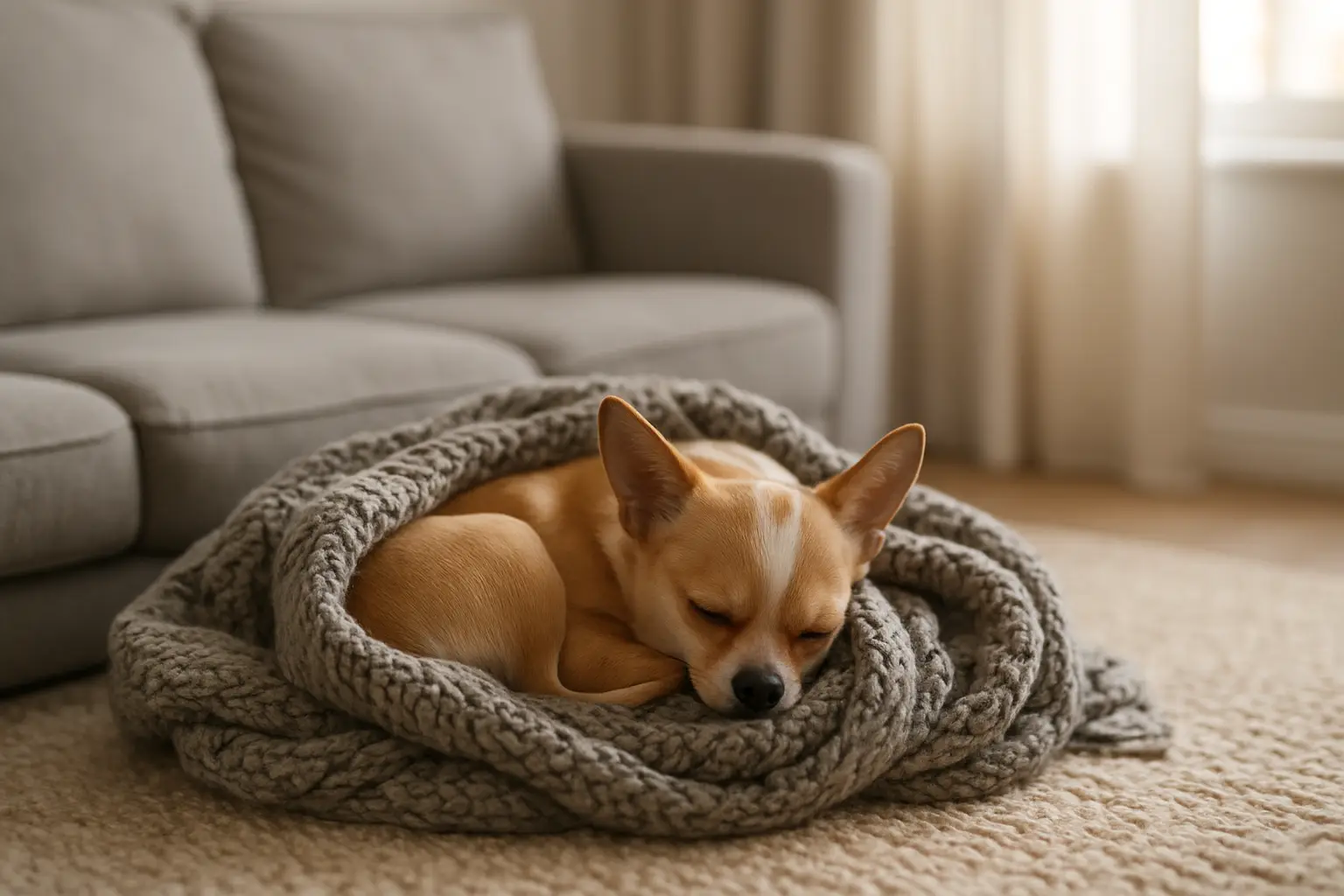How to Create a Morning and Evening Routine for Your Pet
Daily structure is one of the most powerful tools you can offer your dog or cat. Just like humans, pets rely on predictability to feel secure. A well-crafted pet daily routine—especially in the morning and evening—can reduce anxiety, support better behavior, improve sleep, and deepen your bond.
While spontaneous play and interaction are important, structured rituals are what shape your pet’s sense of home, family, and safety. Whether you’re caring for an energetic puppy, a curious kitten, or a calm senior, routine is the emotional scaffolding that helps them thrive.
In this guide, we’ll explore how to create meaningful morning and evening routines that work for both you and your pet.

Why Routine Matters for Dogs and Cats
Animals are creatures of habit. They observe patterns, associate actions with rewards, and build confidence through repetition.
Benefits of a Daily Routine:
- Reduces stress and anxiety
- Improves behavioral consistency
- Supports digestive health and bathroom regularity
- Enhances obedience and training outcomes
- Strengthens trust and emotional connection
Routine isn’t rigidity—it’s reliability. It gives your pet the tools to feel at ease in a world they don’t fully control.
Step 1: Design Your Routine Around Natural Animal Behavior
Dogs and cats both have natural rhythms that affect how they move through the day.
Dogs:
- Thrive on structured interaction and outdoor time
- Do best with scheduled feeding and exercise
- Respond well to clear cues for rest vs. play
Cats:
- Are crepuscular (most active at dawn and dusk)
- Prefer autonomy with some structure
- Enjoy short bursts of play and stimulation
Use these patterns as your guide to structure morning and evening rituals.
Step 2: Start the Morning with Calm Connection
How the day begins sets the tone for everything that follows.
Ideal Morning Routine:
- Gentle Greeting
- Avoid sudden noise or overwhelming affection
- Use a calm, happy tone to greet your pet
- Bathroom or Litter Box Time
- Take dogs out as soon as possible
- For cats, check and clean the litter box if needed
- Fresh Water
- Always refill bowls with clean, room-temperature water
- First Meal
- Feed in a quiet, familiar spot
- Maintain a consistent time for morning feeding
- Light Play or Training
- Spend 10–15 minutes engaging their brain and body
- Use this as a bonding moment and mental warm-up
- Prepare for Alone Time (if applicable)
- Offer a treat-dispensing toy or puzzle
- Keep your departure low-key (no dramatic goodbyes)
These steps build security and give pets a clear “start” to their day.
Step 3: Customize the Morning for Your Schedule
You don’t need a full hour every morning—just consistency.
Quick Morning Routine (15 Minutes):
- Bathroom/litter box
- Small meal or treat
- 5-minute play session
- Calm goodbye with safe toys
Extended Morning Routine (30–45 Minutes):
- Long walk or indoor play
- Full meal
- Basic training or trick practice
- Calm brushing or cuddle session
- Departure prep
Choose what works for you—but make it predictable.
Step 4: Maintain Structure During the Day (Even When You’re Gone)
What happens between morning and evening also affects routine success.
While You’re Away:
- Use automated feeders if needed
- Leave access to toys or perches
- Keep shades partially open for daylight rhythm
- Provide soft background noise or music
Pets with structured mornings settle better throughout the day.
Step 5: Transition Calmly Into the Evening
Evening is a time to wind down—not rev up.
Ideal Evening Routine:
- Greeting Ritual
- When returning home, keep your energy calm
- Let your pet approach you at their pace
- Offer a soft hello and a few moments of presence
- Bathroom or Litter Check
- Let dogs out or clean the litter box
- Observe for any signs of digestive or stress-related changes
- Dinner
- Feed in the same spot at the same time
- Offer a small chew or lick mat to extend mealtime
- Decompression Time
- Allow free movement, quiet play, or window-watching
- Let them choose how to settle in after eating
- Evening Walk or Light Play
- Low-energy activity: short walk, feather toy, fetch, gentle brushing
- Wind-Down Cues
- Dim lights
- Use a soft voice
- Guide them to their rest space
Rituals help pets anticipate sleep and reduce nighttime anxiety.
Step 6: Use Verbal Cues and Energy to Reinforce Time of Day
Pets don’t know “6 PM”—but they understand tone, pacing, and pattern.
Morning Cues:
- Upbeat voice
- Brighter lighting
- Movement and energy
- Short, engaging interactions
Evening Cues:
- Soft voice
- Dim lighting
- Slower body movement
- Repetition of phrases like “bedtime” or “settle down”
Your energy teaches them how to shift gears emotionally.
Step 7: Design a Sleep Routine That Works for Them
Where and how your pet sleeps affects their emotional and physical health.
Dogs:
- Create a predictable sleep area (crate, bed, mat)
- Avoid exciting them right before sleep
- Use soothing sounds or pheromone diffusers if needed
Cats:
- Respect their choice of sleep location
- Provide soft bedding near heat sources or high perches
- Use interactive play before bed to mimic natural hunting → sleeping rhythm
Sleep should be safe, familiar, and undisturbed.
Step 8: Use Your Routine to Build Confidence
Every step in your routine is a micro-message: “You are safe. You are loved. You know what to expect.”
Confident pets:
- Adjust better to travel or vet visits
- Show fewer signs of separation anxiety
- Behave more calmly at home
- Sleep more deeply and eat more consistently
Routine is emotional scaffolding.
Step 9: Adapt for Age, Breed, and Personality
No two pets have the same rhythm. Customize the routine accordingly.
Puppies & Kittens:
- Need more frequent bathroom breaks and feedings
- Short, gentle bursts of play
- Lots of naps throughout the day
Seniors:
- Require more rest and support during transitions
- May need medications or comfort rituals
- Thrive with soft voices and slow pacing
High-Energy Breeds:
- Benefit from long morning walks or enrichment
- Need structure to avoid nighttime zoomies
Sensitive or Shy Pets:
- Prefer predictable, quiet routines
- Thrive on rituals involving touch, sound, or scent
Tailor your time to their temperament.
Step 10: Stick to the Routine—Even on Weekends
Pets don’t understand weekends or holidays. Sudden changes can confuse them.
Tips:
- Wake up at a similar time, even if you relax after
- Keep feeding, walking, and play sessions consistent
- Avoid giving access to forbidden areas “just this once”
Your consistency builds their security.
Final Thoughts: Rituals Create Relationship
Your morning and evening routines aren’t just tasks—they’re daily love letters.
Every bowl of food, every “good morning” whisper, every calm bedtime cue is a thread in the relationship you’re weaving with your pet.
Over time, those threads become a bond strong enough to carry them through change, stress, and even aging. That bond tells them: “You’re safe here. You’re home. I see you. I care.”
And that’s the kind of structure that doesn’t just create a routine—it creates a life.




Post Comment